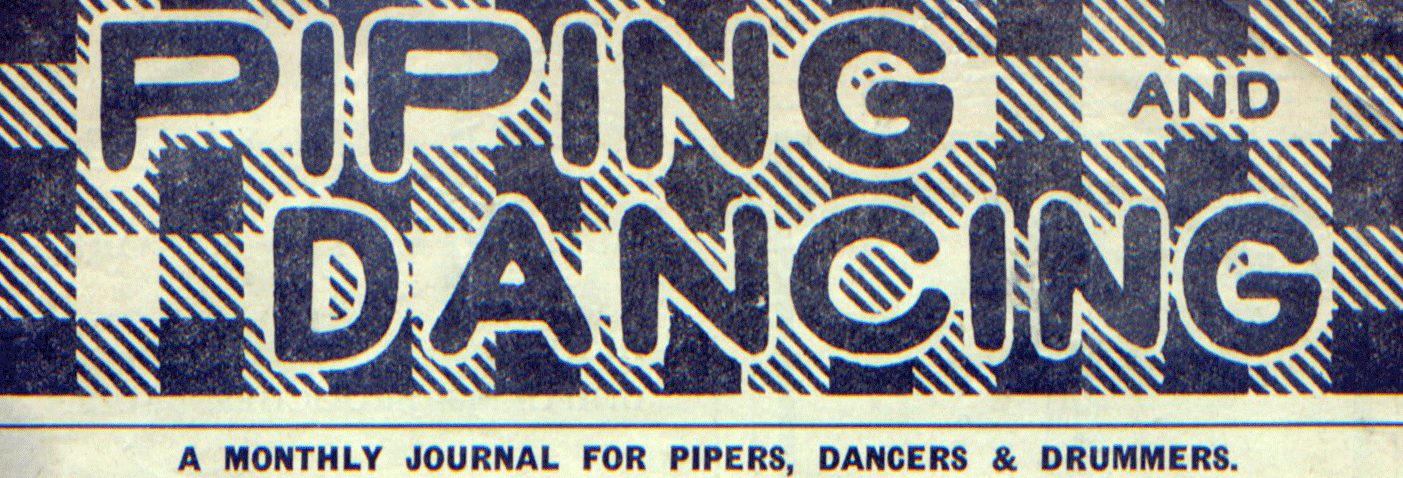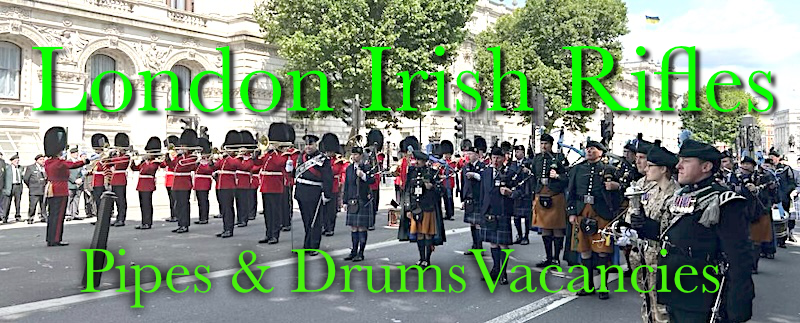‘Piping and Dancing’ magazine of October 1935 reports on the first five years of the Scottish Pipe Band Association. The picture above is of the Rockhampton Pipe Band, Queensland, Australia in 1936, courtesy Queensland State Library.
Scottish Pipe Band Association Notes
By D McIntosh
 The Pipe Band Contesting Season has, once more, drawn to a close, and many of us now find ourselves with some leisure time at our disposal. To what better use can we put this time than in reviewing the past season. Are we able to report progress in our Association? Is the standard of playing, generally speaking, being maintained, or is it being raised? These are questions that assail all who have the welfare of the pipe band movement at heart.
The Pipe Band Contesting Season has, once more, drawn to a close, and many of us now find ourselves with some leisure time at our disposal. To what better use can we put this time than in reviewing the past season. Are we able to report progress in our Association? Is the standard of playing, generally speaking, being maintained, or is it being raised? These are questions that assail all who have the welfare of the pipe band movement at heart.
I think an affirmative answer can be given to these questions. While there has been no instance of spectacular progress in the organisation, there has been a steady increase of all-round proficiency. We have had our setbacks, but they have been counter-balanced by our successes, and by consolidation in other directions.
The most sanguine of us could not have foreseen that the seed sown five years ago would become such a strong and well-nourished plant. This quick access to strength demonstrates, beyond a doubt, that the desire among the bands for an association was a very real one, and the constant growth since then shows that they still realise the importance of a strong and large association .
The second question is not so easily answered, but I think everyone who has been privileged to follow the contests closely this season will agree that there has been no deterioration in the general standard of play of the bands in the various competitions. In fact many listeners maintain that the playing is showing a steady improvement year by year, and in particular that the gap between the bands in Grade 1 and those in the lower grades is being lessened. The impetus of competition and the constant striving after superiority is bound to have the effect of improving the quality of performance, and that is one of the main reasons why so many contests are so well supported by the bands throughout the season.
Altogether there have been seventeen contests at which bands of the Association have competed, from Girvan in the south to Pitlochry in the north and from Dunoon in the west to Cupar in the east. Dunoon remains the supreme attraction for bands, but it is closely followed by Renfrew for second place. A regrettable feature in all pipe band contests in these days is the scarcity of Territorial Bands. For instance, only three bands competed in this section at Cowal this year. That is not as it should be , and it is hoped that season 1936 will see a great increase in the number of Territorial competitors.
We are pleased to intimate two new members, namely, HRH princess Louise’ Own Dumbarton County Scout Band and the Fintan Lalor Band of Dublin. To both these bands we extend a right hearty welcome into our ranks. It is pleasing to record that as a result of the generosity of the prize-winning bands at the contest at Pitlochry, the funds of the Association benefited to the extent of £14. The bands concerned have agreed to hand all surplus, after payment of out-of-pocket expenses, to the Association. It is rumoured that Pipe Major Peter Fleming, our Treasurer, is hoping for many more ventures of a similar kind.
The re-grading of the bands which follows immediately on the close of the competitive season, will be dealt with by the Executive Committee at an early date. This is one of the most difficult problems that we are faced with for it is seldom possible to get a definite case where the results follow each other consistently. In other words, a band may have a good victory one week, and yet may find itself beaten by many of the same bands a few weeks later.
If the contest results were strictly consistent throughout the season, regrading would be simplicity itself, but, alas and alack for the peace of mind of the Executive Committee, no such solution seems likely.
















